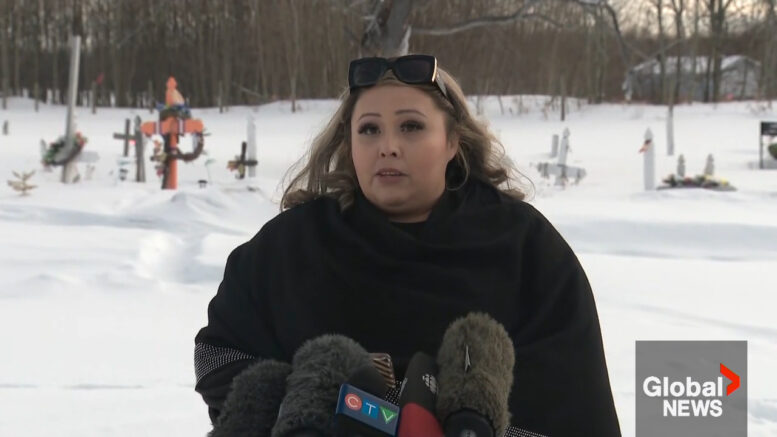By Jeremy Appel
(ANNews) – A new report from the Saddle Lake Cree Nation-based Acimowin Opaspiw Society non-profit says it’s found evidence of “undocumented mass graves” at the former site of Blue Quills Indian Residential School.
The report, which was released Jan. 24, found that the majority of the student deaths occurred as a result of tuberculosis contracted from unpasteurized raw cow milk the students were given to drink.
One of the mass graves was accidentally uncovered in 2004. It took until 2022 to confirm it was an unmarked grave through ground penetrating radar, the report notes, adding that there are suspected to be two others.
The Blue Quills school moved three times over the duration of its existence. From 1890 to 1898 it was located in Lac La Biche, from 1898 to 1932 it was on Saddle Lake Cree nation, and then from 1932 to 1970 it operated out of St. Paul County.
AOS executive director Leah Redcrow’s family has a long history with the school, as outlined in the report’s preface. Three generations of her family were imprisoned at the school at each of its locations, starting with her great grandfather Edward Redcrow in Lac La Biche.
Her grandparents, Stanley and Ruby Redcrow were married at the Saddle Lake location in 1928, and then her parents, Alex and Sheila Redcrow wed in St. Paul in 1974, after her grandfather had taken over administration of the school.
She said prior to the summer of 2021, when members started inquiring about unmarked graves, she had no idea there was a residential school on reserve, which included the Sacred Heart Cemetery.
“Once I found out there was an actual residential school there, we got more disclosures from our community members about them finding body parts of children while excavating, because it’s used as a graveyard still,” Redcrow told the Alberta Native News.
The residential school on reserve was essentially a Catholic colony, with its own church, sawmill and rectory, in addition to the cemetery, she explained.
She said they are mass graves, rather than unmarked graves, because there are multiple people buried in one grave.
“There’s a bunch of clandestine graves of children,” said Redcrow. “We don’t know the exact amount yet because we’re still sifting through all the burial records.”
The grave that’s been uncovered is located about 200 metres north of the school grounds, she added.
Even when the school moved to St. Paul, the dead children would be transferred back to the reserve, without their parents’ knowledge.
The Archdiocese of St. Paul provided AOS with its documents from the residential school, which is how they were able to determine the cause of death, Redcrow said.
She said these children entered the school with a clean bill of health, according to to the records, and then would contract TB within a month.
“We discovered that the cause of that would be drinking unpasteurized raw milk from cattle. It’s quite dangerous to drink unpasteurized milk, because none of the bacteria is killed in the milk. The cattle were also not being tested for tuberculosis or any other diseases, and the children were required to drink three glasses of milk a day with their meal,” Redcrow explained.
She said AOS and the Archdiocese have collaborated closely to get an accurate picture of what occurred at Blue Quills.
“Without them, we would just be like everybody else and we would be totally lost. We wouldn’t have known who died. We wouldn’t have had a clue who any of these children’s bodies are that we’re finding in our cemetery,” Redcrow said, referring to the Archdiocese’s documentation as the “most vital piece of the investigation.”
She said collaborating with Church officials is an example of what reconciliation looks like in practice.
“The people who are there today are not responsible. It’s the people who are alive at that time period who are responsible, and they’re dead,” Redcrow said.
Jeremy Appel is a Local Journalism Initiative Reporter.



Be the first to comment on "Saddle Lake Cree Nation confirms existence of unreported mass grave"